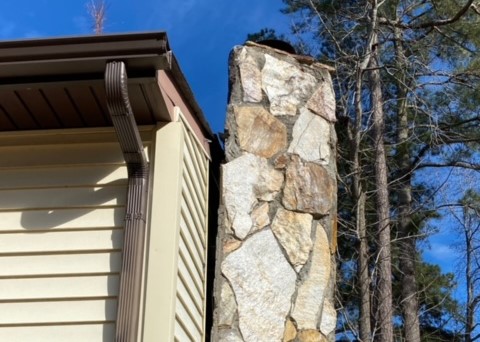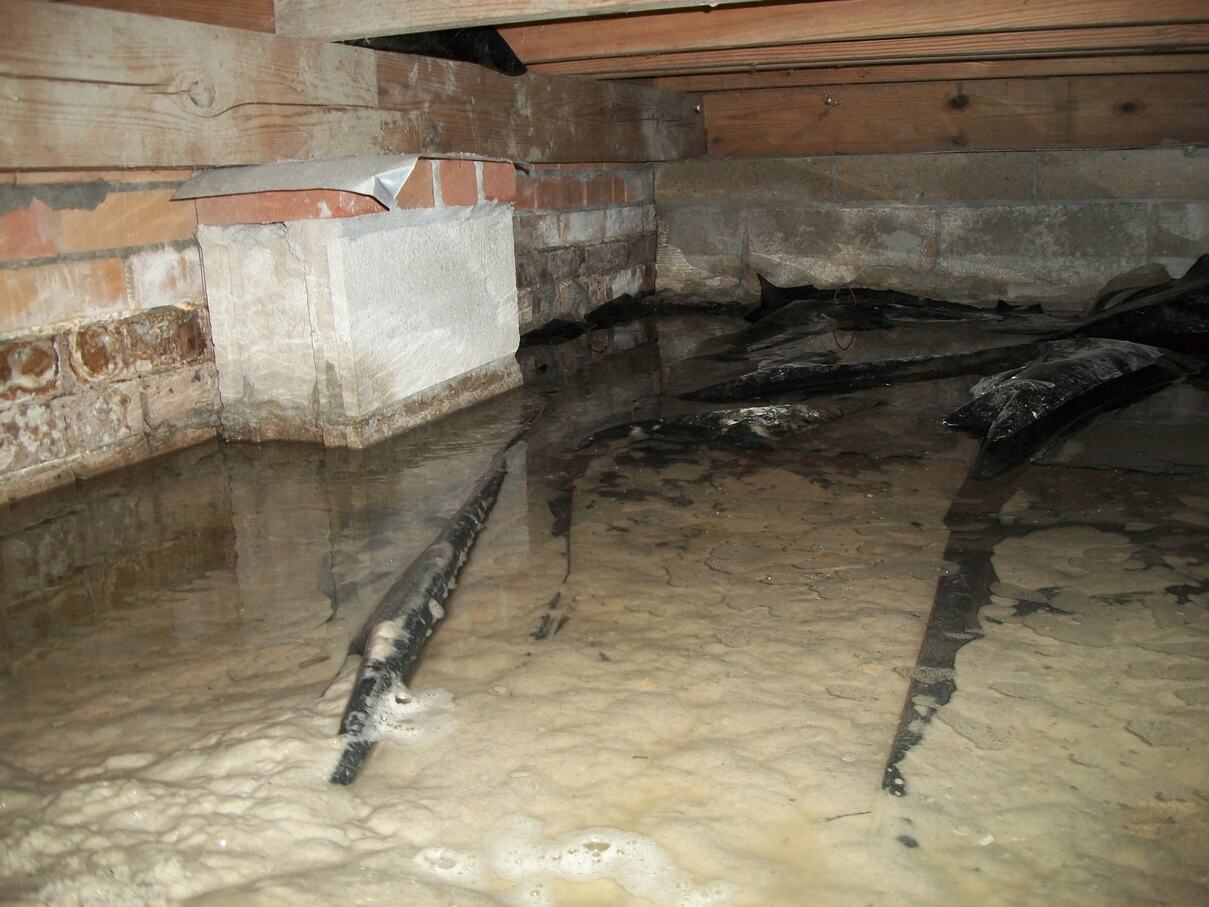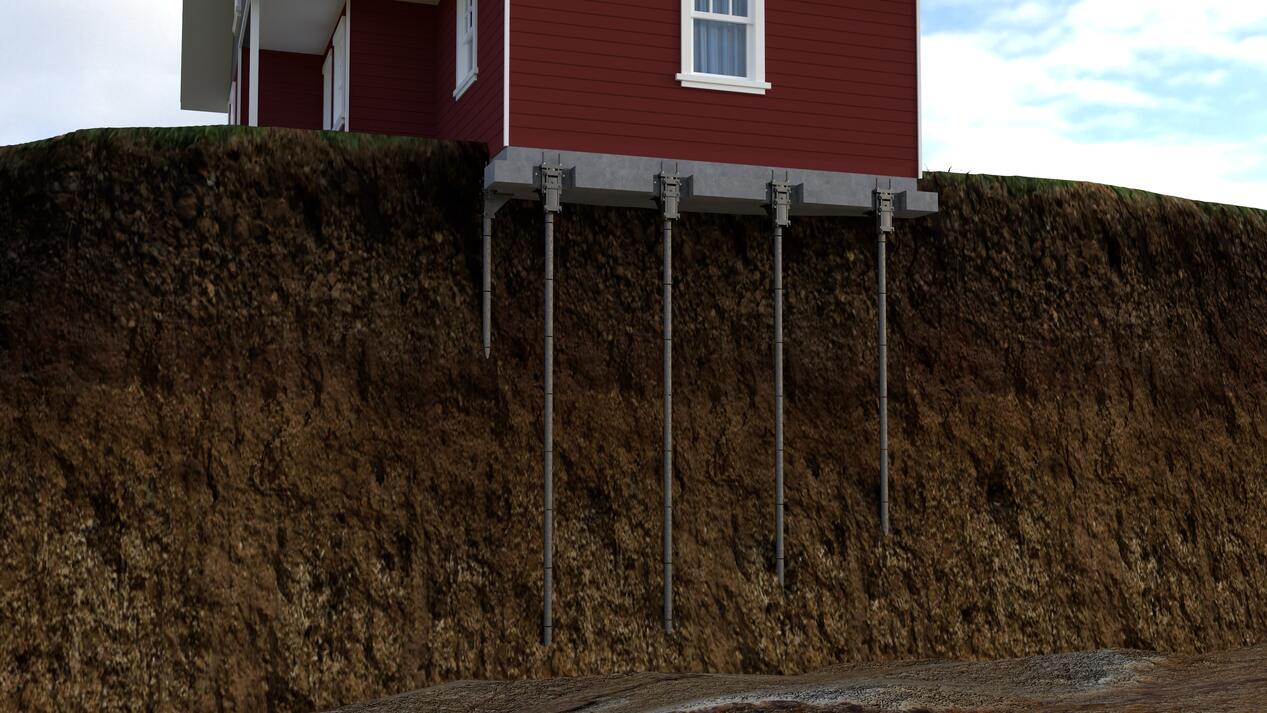Foundation settlement is a common problem that, if left unaddressed, can lead to serious structural damage to your home. As the soil beneath your home shifts or compresses, the foundation can settle unevenly, leading to cracks, sloped floors, and other problems. Understanding the early indicators of foundation settlement can help you address the problem before it becomes more serious—and more expensive to repair.
In this article, we’ll explore the causes of foundation settlement, the signs to watch for, and the best solutions to fix it.
What Causes Foundation Settlement?
Changes or issues within the soil beneath your home often cause foundation settlement. When the soil shifts, sinks, or moves, it can lead to a settling foundation, causing structural issues in your home.
Here are some key causes of foundation settlement and how they impact your property:
- Poor Soil Compaction: If the soil under a foundation isn’t compacted correctly during construction, it remains loose and prone to future movement. Over time, gravity and the weight of your home cause this uncompressed soil to compact unevenly, leading to shifts and settlement in the foundation.
- Expansive Soils: Certain soil types, like clay, respond dynamically to moisture. When these soils absorb water, they expand, pressing against the foundation. According to an article from Missouri S&T, Expansive soils are a significant concern for foundations supporting light structures across many regions in the United States. These soils, often containing swelling clays from residual soils, can produce uplift pressures enough to cause significant damage to lightly-loaded, wood-frame buildings. Insurance companies pay millions of dollars each year to cover repairs for homes damaged by expansive soils.
- Moisture Issues: Moisture variations in the soil are a major factor in foundation settlement. Excess water can cause soil erosion around the foundation, while drought conditions shrink soil—either scenario results in voids or weakened support under the foundation, leading to movement or settlement.
- Construction Problems: Substandard construction practices or weak materials can contribute to early foundation settlement. A poorly designed foundation or inadequate materials may lack the strength to handle natural soil shifts or the weight of the building over time.
- Tree Roots: According to Purdue University, tree roots can pose a serious risk to your house’s foundation. Roots are opportunistic, growing and spreading into areas with the least resistance, such as loose soils or mulch. If a small crack or opening is nearby, roots will use it to access moisture, potentially widening the breach and worsening foundation damage.
- Plumbing Issues: Leaking pipes or inadequate drainage systems can introduce excess water into the soil, creating soft spots or causing erosion. This excess water destabilizes the soil and undermines the foundation’s support, often leading to settlement.
- Seismic Activity: Earthquakes and other seismic events create sudden shifts in the soil that can disturb a foundation’s stability. Even minor seismic activity can lead to settlement, especially in regions with unstable soils.
Signs That Your Foundation Is Settling
Settlement often develops over time, but identifying foundation settlement signs can help you prevent costly repairs and further damage.
Here’s a closer look at common indicators of foundation settlement:
- Cracks in Walls and Floors: Vertical or stair-step cracks in your foundation, walls, or floors are often some of the first signs of foundation movement. These cracks occur when the foundation shifts, causing stress in the structure above.
- Uneven or Sagging Floors: If you notice sloping, uneven floors or gaps forming between the floor and baseboards, this can be a sign of foundation settlement. As the foundation moves, it can cause parts of the floor to sag or pull away from walls.
- Sticking Doors and Windows: Uneven foundation settlement can shift the house’s frame, making doors and windows misaligned and difficult to open or close. This is due to the frame warping as the foundation settles.
- Leaning Chimney: A leaning or tilting chimney often indicates that one side of the foundation is settling more than the other, causing the chimney to tilt as it loses its even support.
- Gaps Around Windows and Doors: Visible gaps around door or window frames indicate that the foundation has shifted enough to pull walls away from these frames, creating spaces between the framing and the wall.
- Visible Foundation Sinking: If the foundation is visibly sinking, you may see a noticeable dip or depression in the ground around your home. This uneven sinking often signals significant foundation issues.
- Nail Pops in Drywall: Nail heads popping out of drywall often occur due to uneven foundation settlement. As the structure moves, the framing experiences stress, causing nails to shift or pop through the drywall.
- Bowed Foundation Walls: Inwardly curved or bowed foundation walls indicate severe structural stress, often due to uneven settlement. This bowing can be a warning sign of potential foundation failure if not addressed.
- Standing Water: Pools of water accumulating near the foundation can soften the soil, leading to further erosion and instability. Excess moisture weakens the foundation’s support, encouraging settlement.
Real-World Examples Of Homes With Foundation Settlement
When it comes to foundation settlement, the impact on a home—and the peace of mind of its residents—can be profound. Here are some real-life stories from homeowners who faced foundation issues, highlighting the challenges and the importance of working with a reliable repair team.
Leo’s Project: Push And Auger Pilings To Stabilize A Sinking Corner
Leo, an experienced construction professional, knew something had to be done when the front corner of a house began sinking. His project required a careful approach with both push and auger piling installed strategically to stabilize the structure. The team’s method involved installing interior push pilings to prevent further movement, then removing and rebuilding the structural brick before finishing with the auger pilings. For homeowners seeing significant settlement at specific points, such as corners or foundation walls, techniques like piling can stabilize effectively.
K. B.’s Case: Sinking Floors And Structural Deterioration
When K.B. noticed that her floors were sinking, more extensive damage beneath the surface, including termite-related deterioration of a primary support beam, was observed. Sinking floors clearly indicate foundation settlement, often accompanied by other signs like gaps in doors and windows or sloping surfaces. In K.B.’s case, addressing multiple issues simultaneously was vital to restoring her home’s integrity. If you detect floors that aren’t level or see gaps around door frames, it’s time to call in a foundation expert for a thorough evaluation.
These real-life accounts illustrate how foundation settlement can disrupt daily life and the critical importance of early intervention. Knowing what signs to look for and taking proactive steps with experienced professionals can help protect your home from long-term structural issues.
Best Solutions For Fixing Foundation Settlement
Depending on the severity of the settlement and the type of soil under the home, different methods may be applied to restore stability. Here are the most effective solutions for fixing foundation settlement:
Helical Piers
Helical piers are steel shafts with helix-shaped plates at the base, resembling large screws. These piers are drilled or “screwed” into the soil until they reach stable soil or bedrock. Once secured, helical piers transfer the weight of the foundation onto these more stable layers, effectively bypassing the unstable, shifting soil.
Foundation Leveling
In some cases, foundation leveling may be required to restore the home to its original, even position. This process involves lifting specific foundation areas that have settled and supporting them with piers, beams, or other stabilization methods.
Soil Stabilization
Homes built on expansive soils, which tend to shift with moisture levels, are particularly prone to foundation settlement. Soil stabilization is a preventive approach that involves injecting chemicals, resins, or other materials into the ground to improve soil stability and reduce movement. This technique strengthens the soil under and around the foundation, reducing the risk of future settlement.
Push Piers
Push piers, or resistance piers, are steel tubes driven deep into the ground until they reach solid bedrock or stable soil. Using the structure’s weight as a counterbalance, these piers can lift and support the foundation, preventing further sinking or shifting.
Why You Should Address Foundation Settlement Early?
Foundation settlement is more than a structural issue; if left unaddressed, it can lead to a chain of serious consequences for both your home and finances. Here’s why early intervention is crucial:
Increased Repair Costs
Foundation settlement typically starts as a minor issue—perhaps a tiny crack or a slightly sloped floor. However, the problem worsens over time, with cracks widening, walls shifting, and foundation parts sinking deeper. What begins as a relatively affordable repair can become a significant, costly project if not addressed promptly. Early repairs can save homeowners from the higher expenses of advanced structural issues.
Risk Of Water Damage
As a foundation settles, cracks and gaps form, creating entry points for water. This moisture leads to serious issues, including mold growth, wood rot, and increased humidity throughout the home. Repairing these cracks, applying waterproofing measures, and sealing any vulnerable areas early can prevent moisture problems and help maintain a healthy, dry home environment.
Decreased Property Value
Homes with unresolved foundation issues often suffer a decline in property value. Visible signs of foundation settlement—such as cracks in walls, uneven floors, or sticking doors and windows—can make a poor impression on potential buyers and deter lenders. In many cases, buyers will avoid properties with structural problems, knowing the significant costs and risks involved.
Impact On Overall Structural Integrity
The foundation is the primary support structure for your entire home. As it shifts and settles, it affects the stability of other elements, including walls, floors, ceilings, and even the roof. These issues compromise the home’s structural integrity, putting it at greater risk in heavy rains, flooding, or natural disasters. Early intervention helps maintain the strength and durability of the home, ensuring it remains a safe and solid structure for years to come.
Foundation settlement is a serious structural issue that can lead to extensive damage to your home if not addressed promptly. Recognizing the warning signs early and taking action can prevent costly foundation repairs and ensure your home’s long-term stability. Whether it’s helical, push piers, or foundation leveling, professional repair solutions offer the best protection for homes affected by foundation settlement.
Don’t wait until minor issues become major problems—contact AMC911 today for a free inspection and consultation. Let our team provide the peace of mind and reliable foundation settlement repair your home deserves.



















